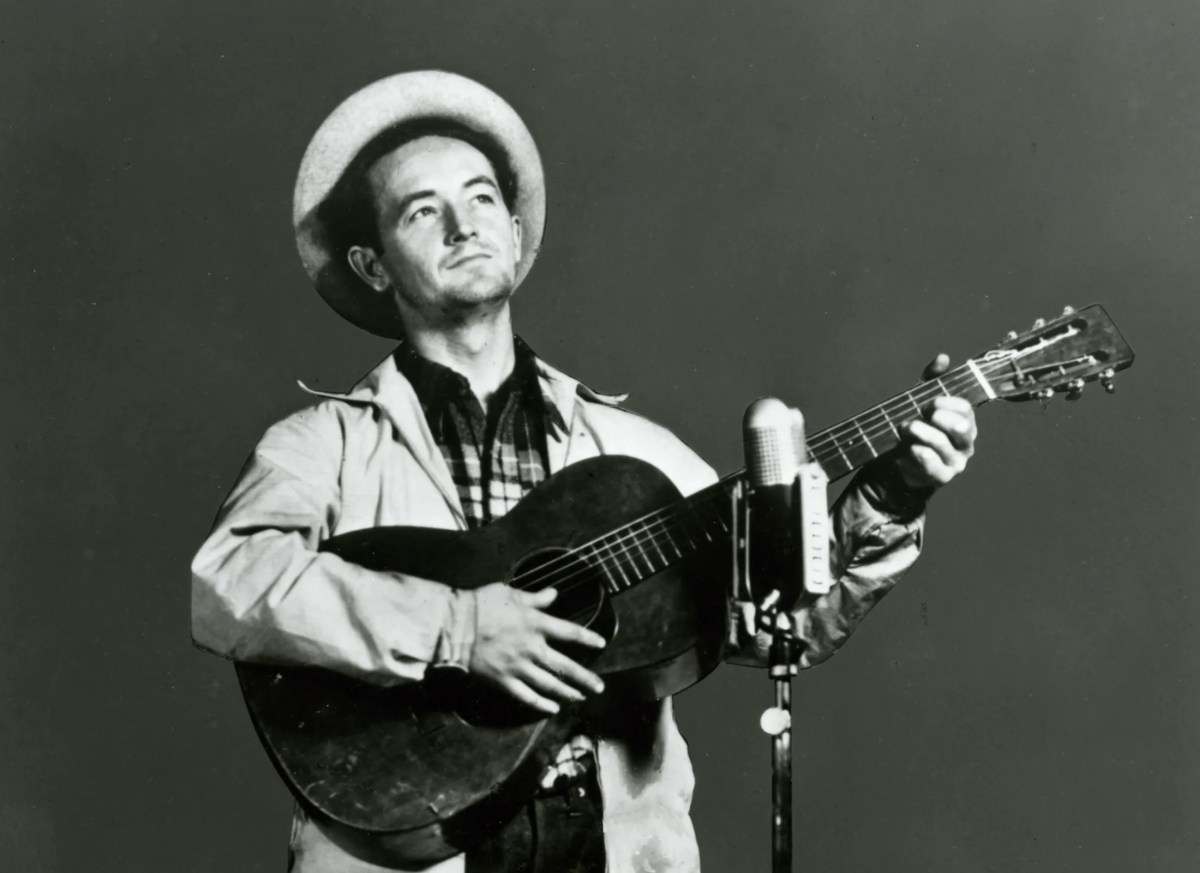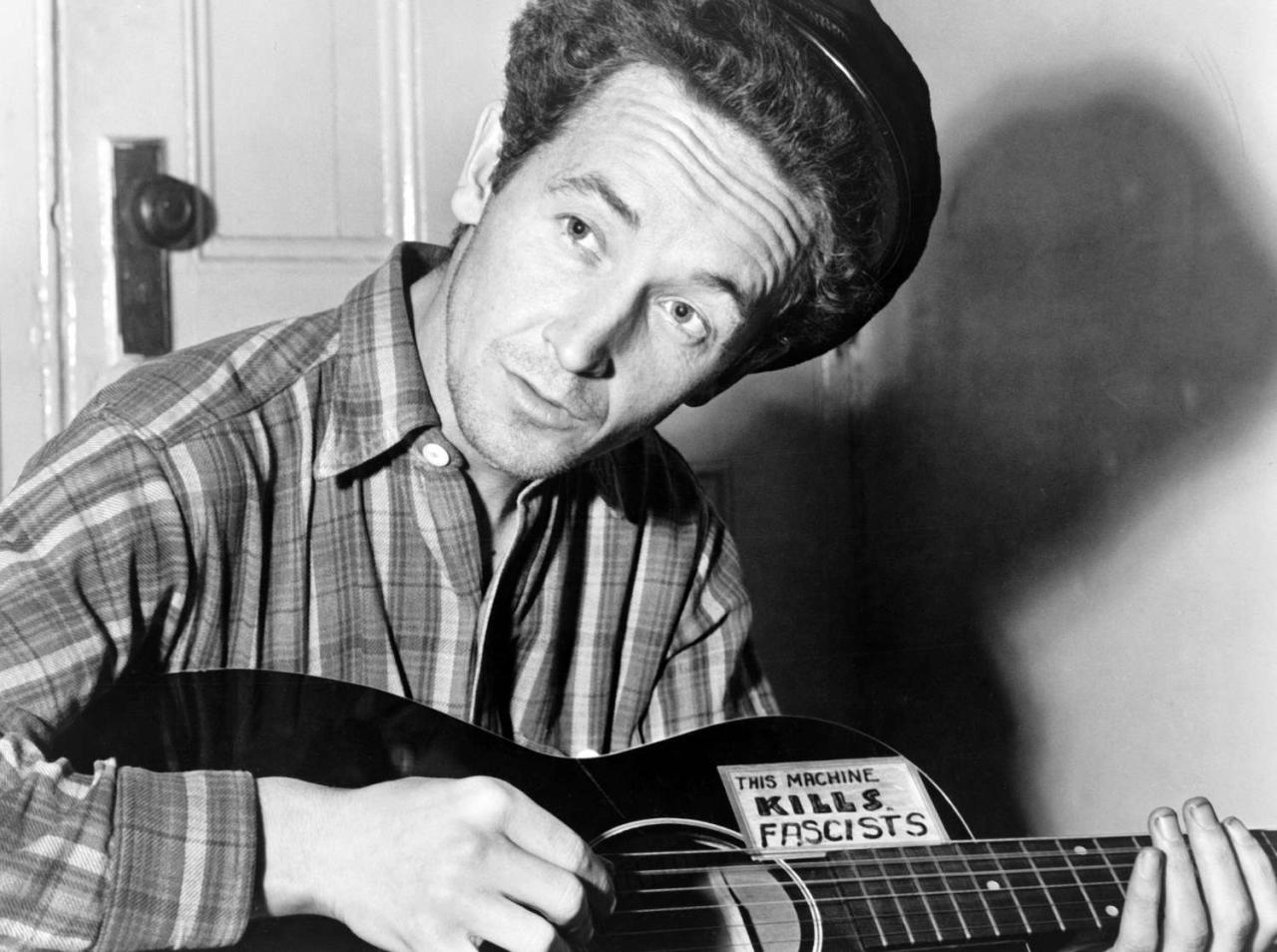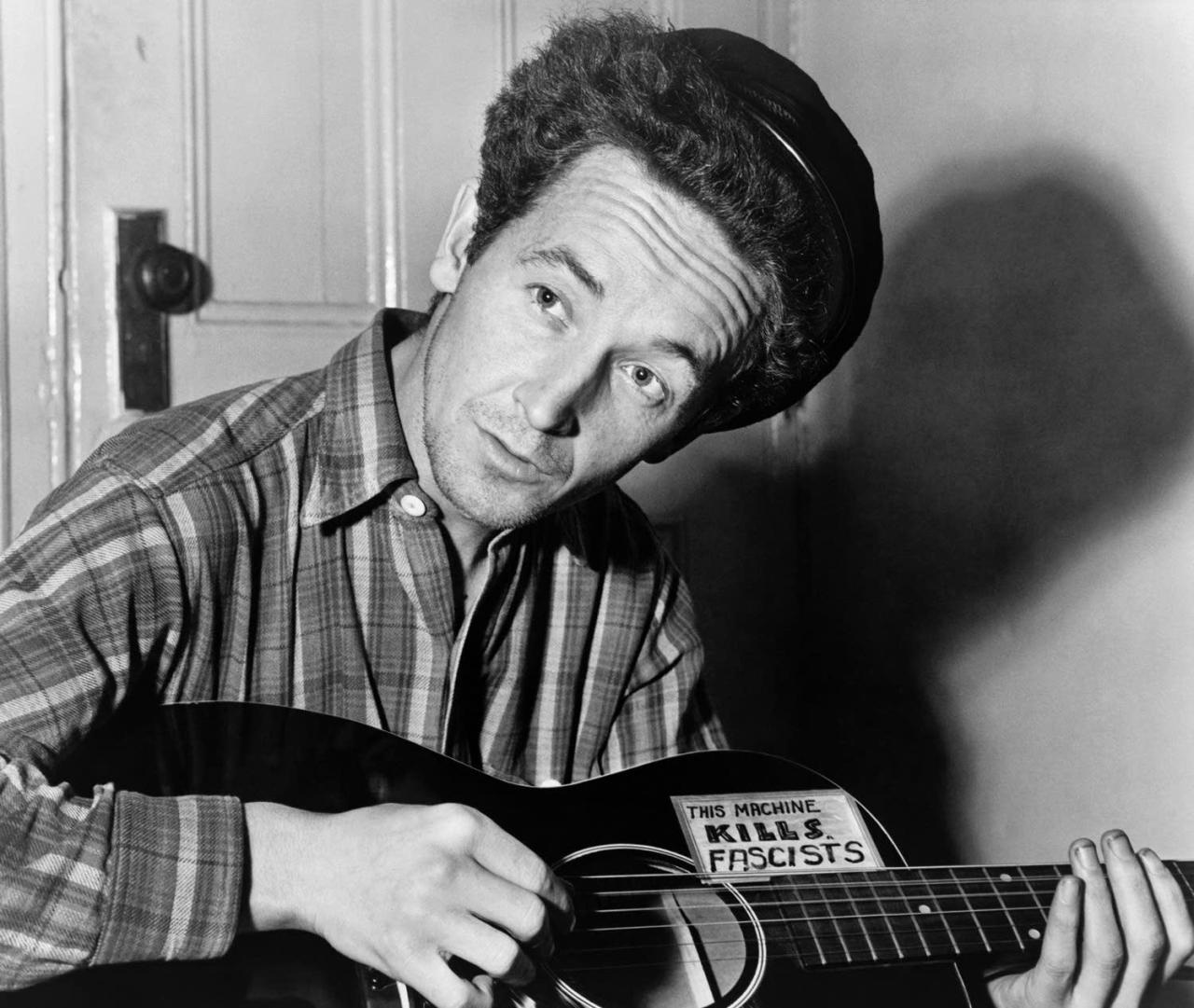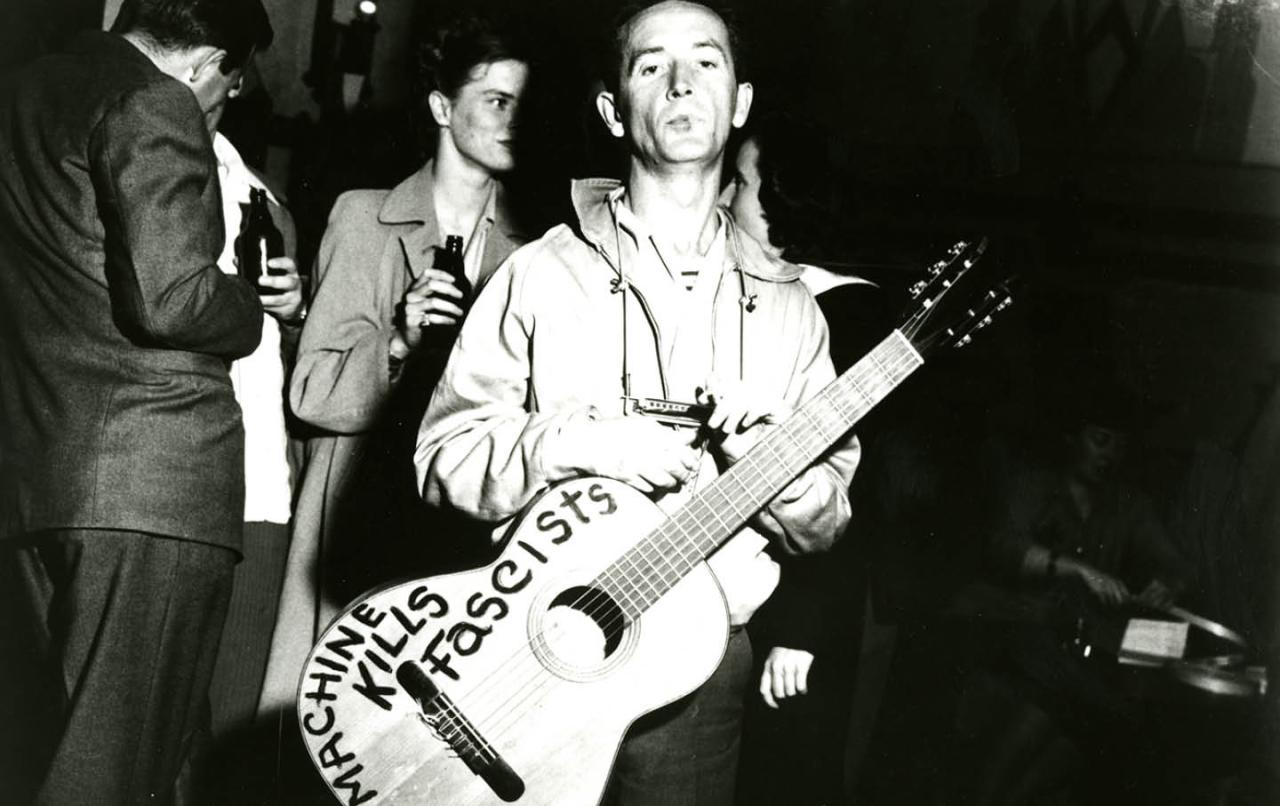Woody guthrie illness – Woody Guthrie’s illness, Huntington’s disease, profoundly impacted his life and music, shaping his iconic legacy as a folk legend.
Despite the challenges posed by his debilitating condition, Guthrie’s unwavering spirit and artistic brilliance left an indelible mark on American music and culture.
Woody Guthrie’s Illness
Woody Guthrie was an American folk singer and songwriter who suffered from Huntington’s disease, a neurodegenerative disorder that affects movement, cognition, and behavior. The disease is caused by a mutation in the huntingtin gene, which leads to the production of a toxic protein that damages neurons in the brain.
Impact on Life and Career
Guthrie’s illness had a profound impact on his life and career. The disease first manifested itself in the early 1940s, when he began to experience involuntary movements and slurred speech. As the disease progressed, he became increasingly disabled and was eventually unable to perform or write music.
He died in 1967 at the age of 55.
Coping with Illness
Despite his illness, Guthrie remained optimistic and continued to write and perform music throughout his life. He used his music to express his struggles with the disease and to raise awareness of Huntington’s disease. He also found solace in his family and friends, who supported him through his illness.
Diagnosis and Treatment
Woody Guthrie was diagnosed with Huntington’s disease, a rare and fatal genetic disorder that affects the brain and nervous system. The diagnosis came in 1952, after years of unexplained symptoms, including personality changes, cognitive decline, and physical deterioration.
There is no cure for Huntington’s disease, but treatments can help to manage the symptoms. Guthrie received a variety of treatments, including medications to control his involuntary movements and speech difficulties, and therapy to help him cope with the emotional and psychological effects of the disease.
Challenges and Complications
Guthrie faced a number of challenges and complications during his treatment. The medications he took had side effects, including drowsiness and nausea, which made it difficult for him to perform his music. He also experienced periods of depression and anxiety, which made it difficult for him to stay motivated and focused on his treatment.
Symptoms and Progression
Woody Guthrie’s illness, Huntington’s disease, manifested itself through a range of symptoms that gradually worsened over time. Initially, he experienced subtle changes in his personality and behavior, becoming increasingly withdrawn and irritable.
As the disease progressed, more pronounced symptoms emerged, including involuntary movements, known as chorea, which affected his coordination and balance. He developed slurred speech and difficulty swallowing, making it challenging for him to communicate and eat. Additionally, cognitive decline became evident, leading to memory loss and impaired judgment.
Unique Symptoms
One unique symptom that Woody Guthrie exhibited was a persistent cough, which was likely related to the neurological damage caused by Huntington’s disease. This cough was a distinctive feature of his later years and became a recognizable characteristic.
Medical Records and Documentation
Woody Guthrie’s medical records provide valuable insights into the progression of his illness and the treatments he received. These records include hospital charts, doctor’s notes, and correspondence between Guthrie and his healthcare providers.
A timeline of Guthrie’s doctor’s visits and diagnoses reveals a complex and often frustrating journey for both Guthrie and his doctors. In 1948, Guthrie was diagnosed with Huntington’s disease, a fatal genetic disorder that affects the brain and nervous system.
However, this diagnosis was later disputed by some medical experts, who believed that Guthrie’s symptoms were more consistent with a condition called Creutzfeldt-Jakob disease.
Discrepancies and Inconsistencies
There are some discrepancies and inconsistencies in Guthrie’s medical records. For example, some records indicate that Guthrie was diagnosed with Huntington’s disease in 1948, while other records suggest that the diagnosis was made in 1952. Additionally, some records indicate that Guthrie died from Huntington’s disease, while other records suggest that he died from Creutzfeldt-Jakob disease.
Historical Context
Woody Guthrie’s illness and treatment were shaped by the medical knowledge and cultural attitudes of his time. During the 1930s and 1940s, when Guthrie was first diagnosed with Huntington’s disease, medical understanding of the condition was limited. Doctors primarily relied on observation and physical examination to make diagnoses, and there were no effective treatments available.
Huntington’s disease was first described in 1872 by the American physician George Huntington. However, it was not until the 1930s that researchers began to understand the genetic basis of the disease. In 1939, a team of researchers led by Franz Kallmann published a study that linked Huntington’s disease to a specific gene on chromosome 4.
This discovery provided a major breakthrough in the understanding of the disease, but it did not lead to any immediate improvements in treatment.
In the 1940s and 1950s, some doctors began to use electroconvulsive therapy (ECT) to treat the symptoms of Huntington’s disease. ECT is a procedure in which electrical currents are passed through the brain. It was thought that ECT could improve mood and behavior in patients with Huntington’s disease, but there is no evidence that it is effective in treating the underlying disease process.
In the 1960s, researchers began to develop new drugs to treat the symptoms of Huntington’s disease. These drugs included antipsychotics, which can help to control hallucinations and delusions, and antidepressants, which can help to improve mood. However, these drugs do not stop the progression of the disease, and they can have side effects such as drowsiness and weight gain.
Today, there is still no cure for Huntington’s disease, but there are a number of treatments that can help to manage the symptoms of the disease. These treatments include medications, physical therapy, occupational therapy, and speech therapy.
Comparison to Similar Cases
Woody Guthrie’s case of Huntington’s disease was similar to other cases of the disease that were diagnosed during the same era. The symptoms of the disease, such as involuntary movements, cognitive decline, and psychiatric problems, were all typical of Huntington’s disease.
However, Guthrie’s case was also unique in some ways. For example, Guthrie was diagnosed with the disease at a relatively young age, and he lived for many years after his diagnosis. This was unusual for Huntington’s disease patients at the time, who typically died within 10 to 15 years of diagnosis.
Guthrie’s case also helped to raise awareness of Huntington’s disease. His music and his public appearances helped to educate people about the disease and its devastating effects. Guthrie’s legacy continues to inspire people today, and his work has helped to make Huntington’s disease a more visible and understood condition.
Cultural and Social Attitudes, Woody guthrie illness
The cultural and social attitudes towards Huntington’s disease during Woody Guthrie’s time were often negative. The disease was seen as a shameful and embarrassing condition, and families often tried to hide their loved ones who had the disease. People with Huntington’s disease were often stigmatized and discriminated against.
They were often denied jobs, housing, and other opportunities. In some cases, people with Huntington’s disease were even institutionalized.
Woody Guthrie’s case helped to change some of the negative attitudes towards Huntington’s disease. His music and his public appearances helped to educate people about the disease and its devastating effects. Guthrie’s legacy continues to inspire people today, and his work has helped to make Huntington’s disease a more visible and understood condition.
Impact on Folk Music
Woody Guthrie’s illness had a profound impact on his music, shaping his songwriting and lyrics in significant ways. His experiences with Huntington’s disease led to a shift in his musical style and themes, as he grappled with the challenges and emotions associated with his condition.
Songs and Albums Reflecting Illness Experiences
Guthrie’s illness manifested in a variety of songs and albums, including:
- Bound for Glory(1943): This album featured songs that reflected his experiences with Huntington’s disease, including “Talking Dust Bowl Blues” and “Hard Travelin’.”
- Dust Bowl Ballads(1940): This album included songs that addressed the social and economic hardships faced by farmers during the Dust Bowl, but also hinted at Guthrie’s own struggles with illness.
- “Deportee (Plane Wreck at Los Gatos)” (1948): This song was written in response to a plane crash that killed 28 Mexican farmworkers, and it expressed Guthrie’s empathy for those who faced adversity and hardship.
Legacy and Remembrance: Woody Guthrie Illness
Woody Guthrie’s illness had a profound impact on his legacy. His struggles with Huntington’s disease inspired many of his most poignant and powerful songs, such as “This Land Is Your Land” and “Deportee (Plane Wreck at Los Gatos).” These songs continue to resonate with audiences today, inspiring empathy and compassion for those who suffer from chronic illnesses.
Guthrie’s story has also inspired others to raise awareness about Huntington’s disease and other neurological disorders. The Woody Guthrie Center in Tulsa, Oklahoma, is dedicated to preserving his legacy and educating the public about Huntington’s disease. The center offers a variety of programs and services, including support groups, educational workshops, and musical performances.
Organizations and Foundations
- The Huntington’s Disease Society of America (HDSA) is a non-profit organization that provides support and services to individuals and families affected by Huntington’s disease. HDSA also funds research into the disease and advocates for public policies that support people with Huntington’s disease.
- The Guthrie Foundation is a non-profit organization that supports the Woody Guthrie Center and other organizations that promote folk music and social justice.
- The Huntington’s Disease Youth Organization (HDYO) is a non-profit organization that provides support and resources to young people affected by Huntington’s disease.
Closing Summary
Woody Guthrie’s journey through illness serves as a testament to the indomitable human spirit, inspiring generations with its message of resilience, creativity, and the enduring power of art.
FAQ Compilation
What was the nature of Woody Guthrie’s illness?
Guthrie suffered from Huntington’s disease, a degenerative neurological disorder that affects movement, cognition, and behavior.
How did his illness impact his career?
Guthrie’s illness forced him to retire from performing in the late 1940s, but he continued to write and record music until his death in 1967.
What were some of the unique symptoms he experienced?
Guthrie exhibited involuntary movements, speech difficulties, and cognitive decline, all characteristic symptoms of Huntington’s disease.




